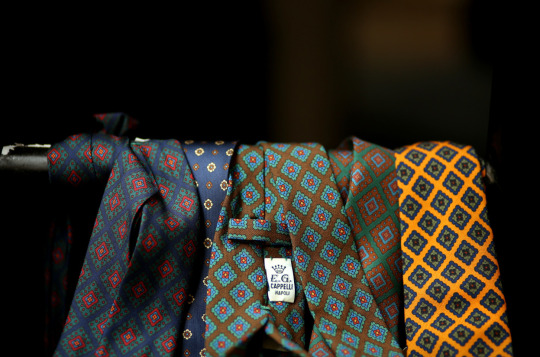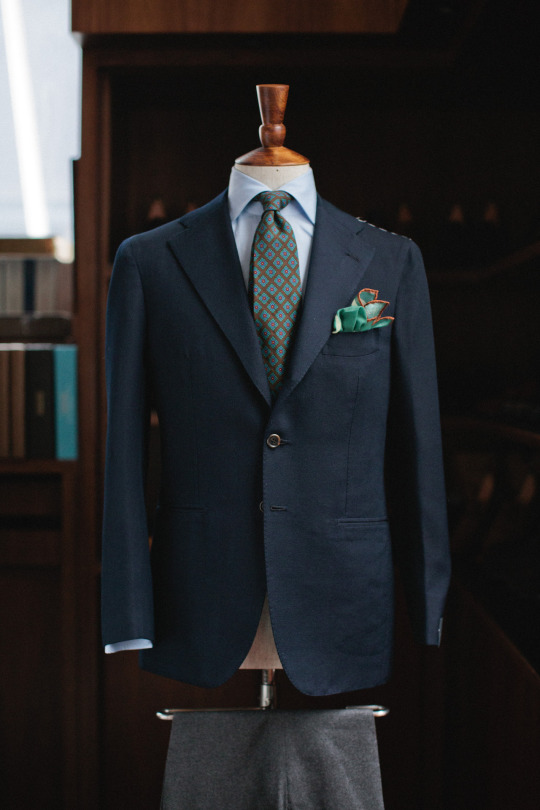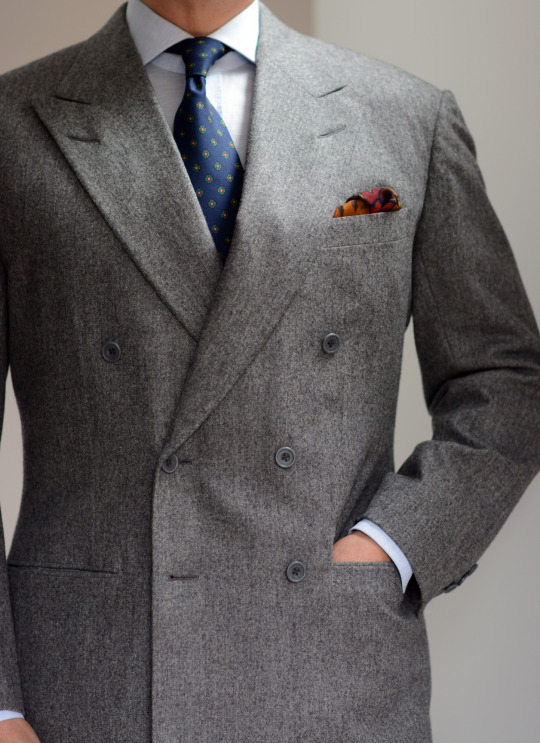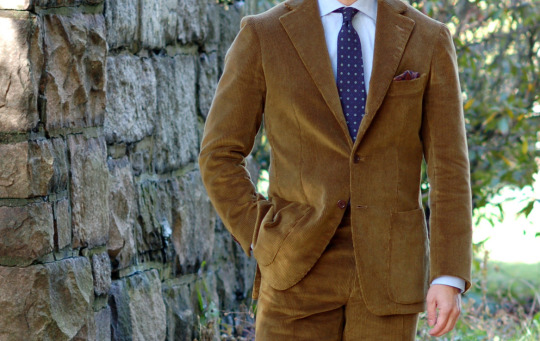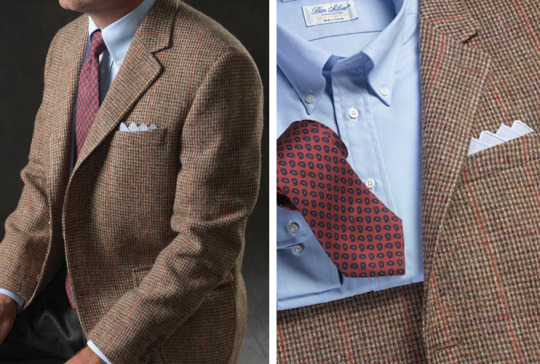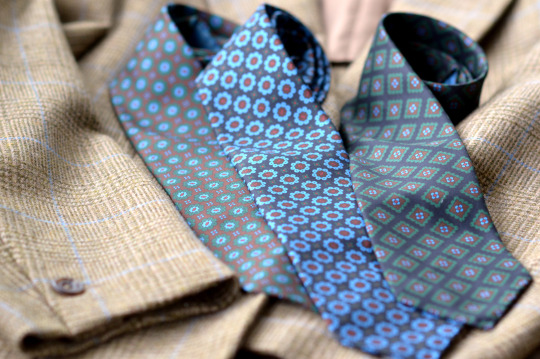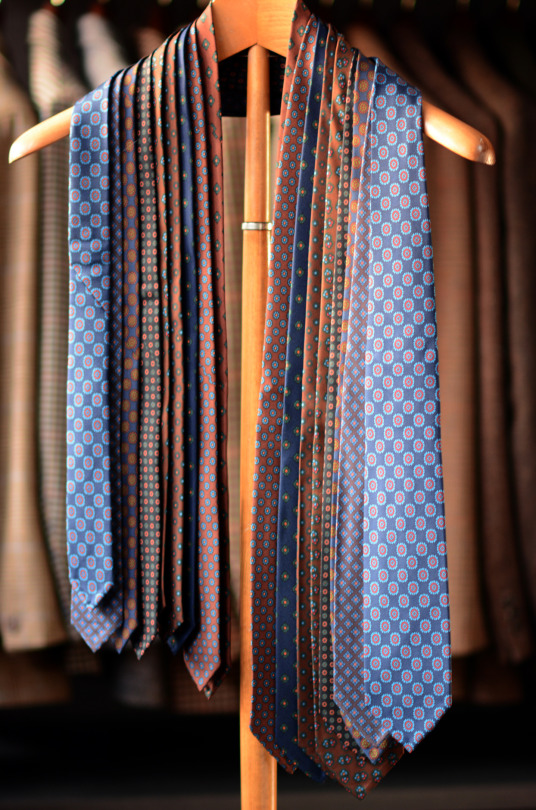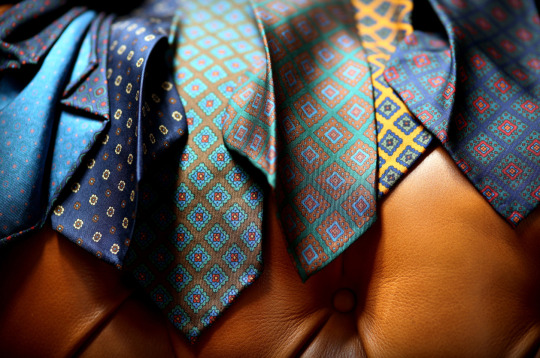
There are only a few more weeks left in winter, but so long as there’s time for tweed, there’s time for madder. Paul Winston over at Winston Clothiers once told me the chalky, dusty hand of ancient madder reminds him of a horse’s wet nose. I’ve always thought was a charming description.
The term madder actually refers to two things. The first is the rich-red, vegetable dye that’s derived from the Eurasian plant Rubia tinctoria. In ancient times, it was used to dye regal clothes, which Bruce Boyer says is how we get the “ancient” part of ancient madder. Then we have “madder style,” which is an old method of printing that involves using thickened mordants, drying, aging, dunging, and dyeing with alizarine (the coloring agent obtained from madder root) or other coloring agents. I’ve never known whether madder in silks refers to the first or the second, but for what it’s worth, not all madder ties contain red.
In any case, the nice thing about madder ties is that they sit in the middle in terms of formality – just as good with tweed and corduroy jackets as they are with worsted suits and pinstripes. I like them in indigo blues, faded greens, and dusty reds, although the occasional buff or brown colored tie can be good as well. For a bit more versatility, aim for ones with paisleys or small geometric prints. The bigger, bolder diamond designs you see above can be great if you mostly wear sport coats, but they’re more particular.
As for where to get some, Drake’s and EG Cappelli are my favorite producers, and you can find them at No Man Walks Alone, Exquisite Trimmings, Gentlemen’s Footwear, and The Armoury. If you like shopping at American trad clothiers, O’Connell’s, Ben Silver, and Brooks Brothers are also worth a look. Lastly, for something custom, see Sam Hober; for something affordable, see Chipp.
(Photos via Arnold Wong, Alan See, Voxsartoria, and Ben Silver)
